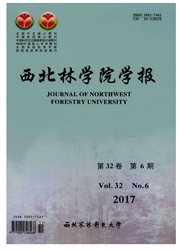

 中文摘要:
中文摘要:
Sexual dimorphism in size and shape is common in many organisms, and is a key evolutionary feature. In this study, we analyzed morphometric data of the Jilin clawed salamander Onychodactylus zhangyapingi, an endemic Chinese salamander, to examine sexual size and shape dimorphism. The morphometric data included 14 characteristics of 13 females and 11 males and was analyzed using univariate and multivariate methods. Our results showed that sexual dimorphism occurs not only in body size, but also in body shape. Males have a longer snout-vent length than females, a rarely reported pattern of male-biased sexual size dimorphism. Females have a larger space between the axilla and groin than males, while males have longer and larger tails compared to females. The sexual dimorphism in body size and shape can be explained by existing theories, but there is little data for the mating system, behavior, reproduction, or ecology of O. zhangyapingi, so further studies are required.
 英文摘要:
英文摘要:
Sexual dimorphism in size and shape is common in many organisms, and is a key evolutionary feature. In this study, we analyzed morphometric data of the Jilin clawed salamander Onychodactylus zhangyapingi, an endemic Chinese salamander, to examine sexual size and shape dimorphism. The morphometric data included 14 characteristics of 13 females and 11 males and was analyzed using univariate and multivariate methods. Our results showed that sexual dimorphism occurs not only in body size, but also in body shape. Males have a longer snout-vent length than females, a rarely reported pattern of male-biased sexual size dimorphism. Females have a larger space between the axilla and groin than males, while males have longer and larger tails compared to females. The sexual dimorphism in body size and shape can be explained by existing theories, but there is little data for the mating system, behavior, reproduction, or ecology of O. zhangyapingi, so further studies are required.
 同期刊论文项目
同期刊论文项目
 同项目期刊论文
同项目期刊论文
 期刊信息
期刊信息
